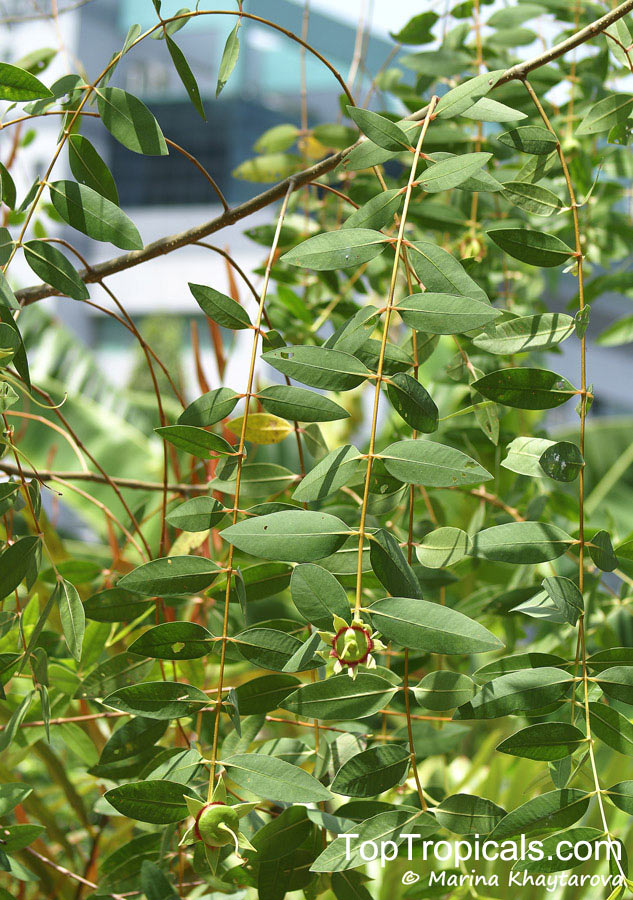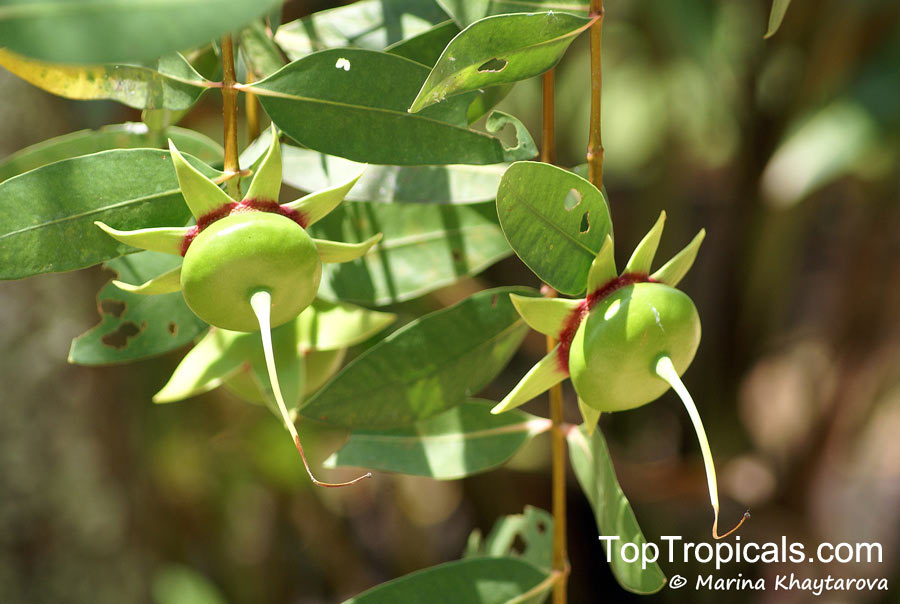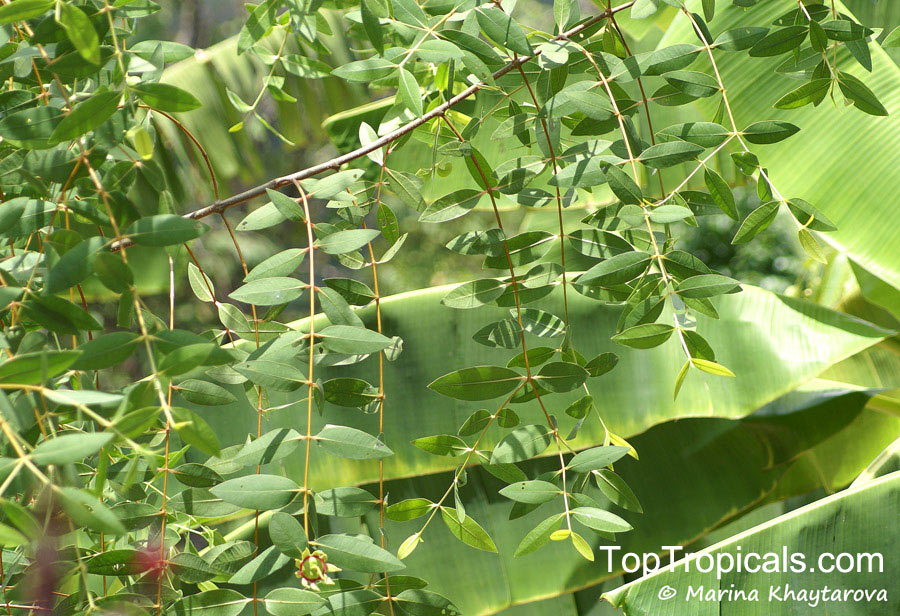TROPICAL PLANT ENCYCLOPEDIA
Pictogram Guide · Mouse over pictogram for definition
Sonneratia caseolaris, Rhizophora caseolaris, Sonneratia acida
Cork Tree, Crabapple Mangrove, Mangrove AppleFamily: Lythraceae
Subfamily: Sonneratioidea
Origin: Southeast Asia








The tree is usually found in tidal river-banks and creeks with mud banks.
Flowers large (10cm diameter) with petals narrow and dark red, and many long white stamens that are pink at the base, forming a powder-puff shape. Flowers only open for one night and have an offensive smell. The fruit is large, about 4 cm across, green, leathery berries with a star-shaped base. When ripe, the fruits are eaten raw or cooked.
Similar plants:
Link to this plant:
https://toptropicals.com/catalog/uid/sonneratia_caseolaris.htm


